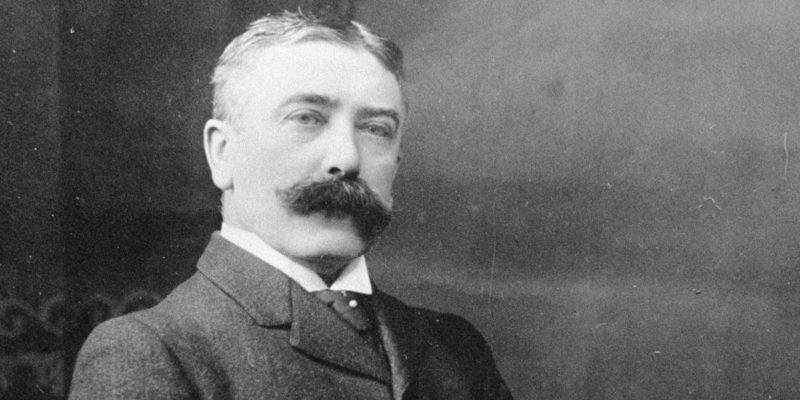We explain what structuralism is, what its characteristics and examples are. Also, what are its bases and poststructuralism.
What is structuralism?
Structuralism is a philosophical movement that emerged around 1920 in Europe , which aims to understand the structures through which meanings are produced in a culture . For that, it is based on the scientific theories and methods of various social sciences , such as anthropology , sociology or psychology .Structuralism describes and analyzes a variety of objects of study, such as culture, economics , language , literature , politics , among others. The analysis assumes that the various research objects may contain hidden or underlying structures that are interrelated and that have significance because they are part of the same system.
The formal beginning of structuralism arose with the work of the Swiss Ferdinand de Saussure Course in General linguistics , published in 1916 by his students as a compilation of the contributions of the linguist during his years as a teacher.
The linguistic regarded language as a system of signs and significance that related to arbitrary and unnatural way, but that could be understood by a group of people who shared certain conventions or standards.
For Saussure, the elements of language were understandable only in relation to each other and to the system that contained them. Language went beyond communication because it influenced the individual and his role in society .
Saussure's linguistics sought to analyze the systematic and constant relationships that existed in human behavior, both individual and collective, that gave rise to the structures of a meaning system.
The structuralist movement as such was formalized after the contributions of multiple disciplines and thinkers, such as anthropology with Claude Lévi-Strauss, Freudian psychoanalysis with Jacques Lacan, semiotics with Roland Barthes, epistemology with Michel Foucault and Marxist philosophy with Louis Althusser. .
Characteristics of structuralism
The structuralist movement is characterized by:
- The existence of a structure beyond the individual.
- The structure that predominates over the individual.
- The structure that conditions and forms the individual.
- The recognition of one's own structure.
- The structure that obeys its own rules and laws.
Some examples of this type of structure are:
- The language . Analyzed by Ferdinand de Saussure from linguistics.
- The unconscious. Analyzed by Jacques Lacan from psychoanalysis.
- Society . Analyzed by Claude Lévi-Strauss from anthropology.
- The economy . Analyzed by Louis Althusser from the Marxist philosophy.
- The knowledge . Analyzed by Michel Foucault from epistemology and its relationship with power.
The foundations of structuralism

Structuralism turned out to be a kind of awakened consciousness that made it possible to understand and analyze the knowledge adopted unconsciously , under the customs and codes that take place in a given culture and in which multiple study disciplines intervene.
The current can be analyzed from three main bases:
- Linguistic structuralism. Based on the theories of Saussure, considered the founder of linguistics. Linguistics is the discipline whose object of study is language, a system of signs found in the minds of various individuals and, therefore, it is considered social and homogeneous. Instead, speech is an individual and heterogeneous action that interacts with language. Saussure held that words were symbols that gave meaning in reference to other words, but not to the nature of reality. The phonetics of a word or its acoustic image, what he called significant, was arbitrarily related to the concept it represented, or what he called meaning. People manage to understand each other when speaking because the relationship between signifier and signified is based on social conventions or structures, that is, because they share the same codes.
- Anthropological structuralism. Based on the theories of Lévi-Strauss, who was a pioneer in considering anthropology from structuralism to analyze the human being and his life in society. That is, he managed to distance anthropology from the concept of history to achieve a more complex analysis.
Structuralism applied to anthropology made it possible to detect the underlying structure, or that remained hidden, and the various relationships between the underlying elements of that structure, such as systems of ideas , kinship or myths , to which individuals ended up subordinate.
- Marxist structuralism. Based on the theories of Louis Althusser, Nicos Poulantzas, and Maurice Godelier, the main contributors to structural Marxism, who tried to establish that it was not Saussure who was the founder of structuralism, but Karl Marx . Marx determined that structure should not be confused with visible relationships and explained hidden logic, which established the foundations of structuralism. This resulted in a common point between the different thinkers of structuralism, be they linguists, anthropologists or Marxists: they all considered the existence of a hidden or underlying structure in the object of study of each discipline.
Poststructuralism
 Post-structuralism emerged from the 1960s as a critique of structuralist thinking of the individual considered a subject subject to a structure (such as language, society or the economy) to understand it as a liberated individual. He proposed a new way of analyzing the social sciences.
Post-structuralism emerged from the 1960s as a critique of structuralist thinking of the individual considered a subject subject to a structure (such as language, society or the economy) to understand it as a liberated individual. He proposed a new way of analyzing the social sciences.The starting point was the 1966 speech of the French philosopher Jacques Derrida on the semiotic analysis of deconstruction. Derrida questioned the epistemological schemes that were based on dualisms such as man / woman or spirit / matter, which limited the apprehension of other points of view or that only considered a central and a peripheral concept.
Derrida questioned the stability and existence of thought structures , with the aim of reaching new approaches previously marginalized by the methodology itself. Post-structuralism broke with the dualistic concept of structuralism that considered, for example, nature and society as opposing or binary terms.
The main achievement of poststructuralism was to have rediscovered and expanded the analytical and radical possibilities, typical of Saussure's theory of language (taken as the most representative significant phenomenon). The main characteristics that defined poststructuralism were:
- Language cannot be explained outside of itself.
- Language produces meaning.
- Language does not express individuality.
The above content published at Collaborative Research Group is for informational and educational purposes only and has been developed by referring reliable sources and recommendations from technology experts. We do not have any contact with official entities nor do we intend to replace the information that they emit.
MA student of the TransAtlantic Masters program at UNC-Chapel Hill. Political Science with a focus on European Studies. Expressed ideas are open to revision. He not only covers Technical articles but also has skills in the fields of SEO, graphics, web development and coding. .
Leave a reply
Your email address will not be published. Required fields are marked *Recent post

Sport: What Is It, Types, Risks, Features, Characteristics and Examples

Dogs: Emergence, Features, Characteristics, Feeding and Breeds

Story: Definition, Elements, Structure, Features and Characteristics

